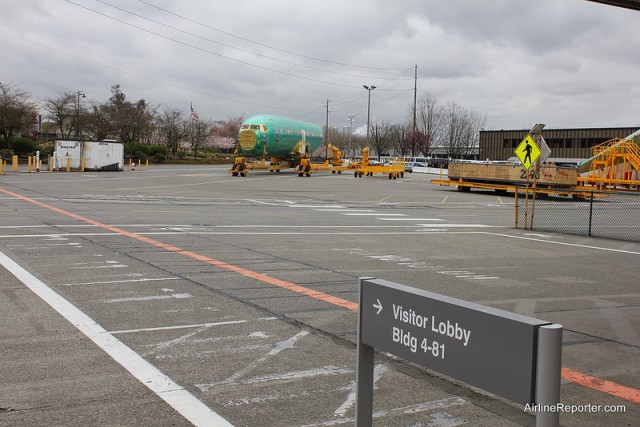
Outside the Boeing 737 factory in Renton, WA. The air frames of the 737 arrive via train. Photo: David Parker Brown
This summer I was excited to take a tour of Boeing’s 737 factory, located in Renton, Washington, with my colleague Chris Sloan over at Airchive.com. Over the past few months we have shared some pretty amazing stories and now I want to give you a photo tour of the facility and walk you through our adventure.
One of my favorite aspects of the facility is the parking lot – yes, that is right. Well, not the lot itself, but the fact that the Boeing 737 actually starts at Spirit AeroSystems in Wichita, KS and the fuselage is transported by train to Renton.
If you like planes and trains (which I do), nothing beats catching a glimpse of one of the 737 fuselages riding on a train to the Renton 737 factory before it is dropped off in the parking lot [this photos shows a bit better how close the plane is to cars].
My latest trip into the factory was my third visit, but the first where I was allowed to bring a camera. Unlike Paine Field, which offers public tours, the 737 factory is closed to the public. For last year’s Aviation Geek Fest, we were very lucky to bring our entire group through the factory – something that will not soon be forgotten.
I think before continuing, it would be good to talk about the location of the 737 factory. Growing up and now living in the Seattle area, I take for granted knowing which aircraft are made/delivered where.
The map above shows Boeing Field [aka King County International Airport] (BFI), which is green; Seattle-Tacoma International Airport (SEA), which is orange/yellow; and Renton Municipal Airport (RNT), where the 737 is made, is blue. Not shown on the map is Paine Field (PAE), which is located about 35 miles north of SEA in Everett, WA, where Boeing builds the 747, 767, 777, and 787.
The Boeing 737 is built at RNT, test flown, and then lands at BFI where it is delivered to its airline customer. So those flight-line photos you have seen of the 737 are not actually taken at RNY, but rather at BFI.
Alright, let’s get going on the photo tour…
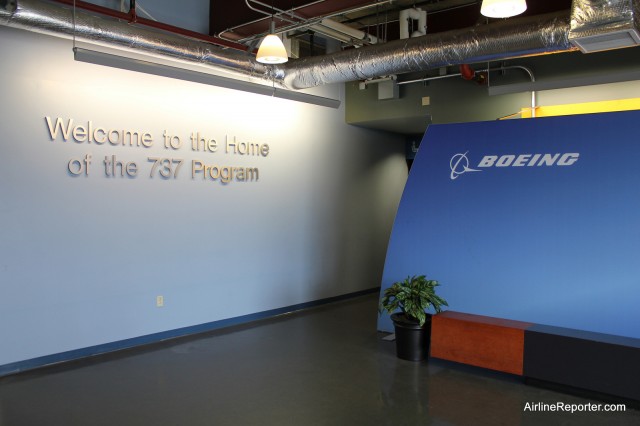
The facility is rarely open to the public, but they still have a labeled waiting area inside the front doors.
After arriving at the Renton facility, we had to meet at a small building and get checked in by security. Once getting our badges, we were taken over to the Building 4-81 lobby before heading to a conference room to be shown a short video.
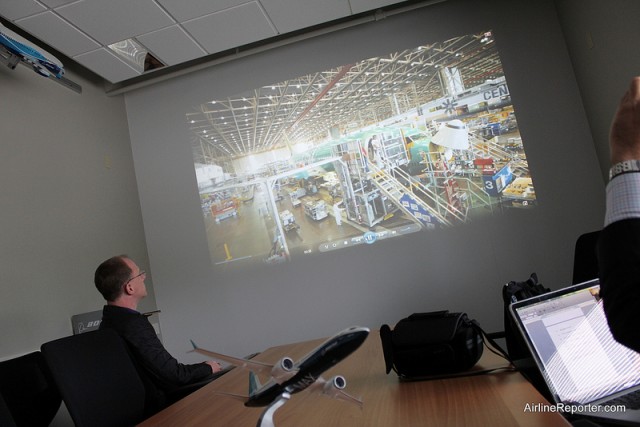
We were shown a Boeing 737 promotional video. The arm/hand on the right is Chris Sloan with Airchive.com. I am such an AvGeek, I moved the 737 model into the shot. Unfortunately, the video is not public.
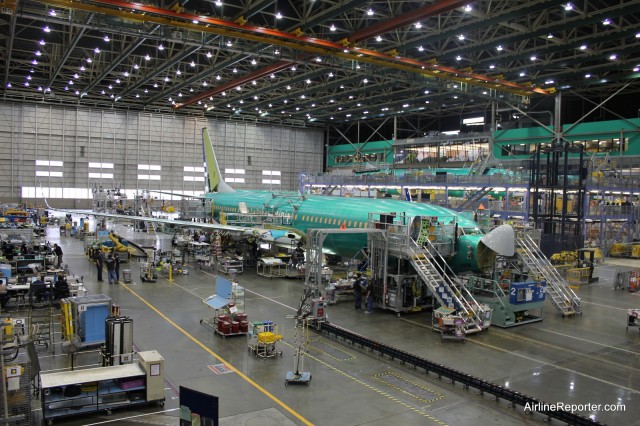
In the background you can see where Boeing puts the 737s fresh off the train to then have their wings and tail added.
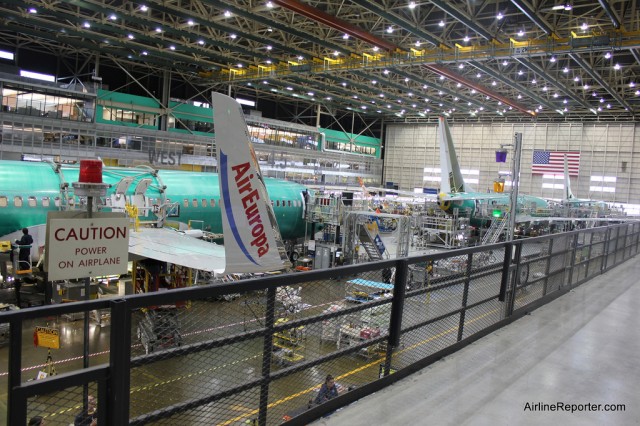
A warning light when power is activated on the aircraft. The customer on this air-frame is pretty easy to identify.
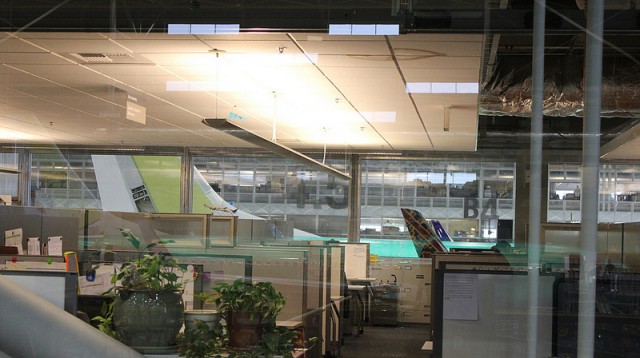
To keep those who design and work with the 737 close to the product, offices were added between Line 1 and Line 2. This provides some pretty epic (and distracting) views.
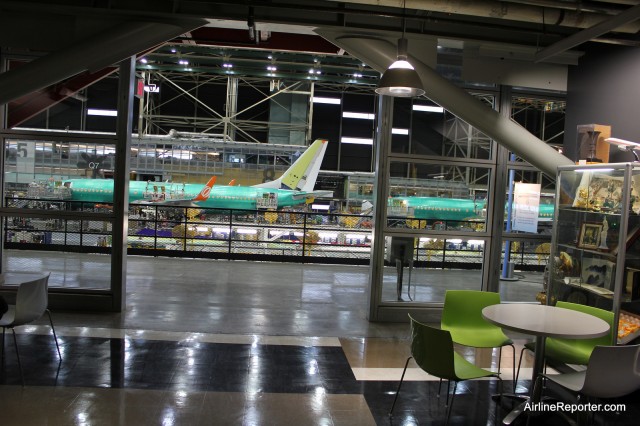
A break area can be used to transition from either of the 737 lines. Memorabilia is kept in the common area (on the right) for employees to enjoy.
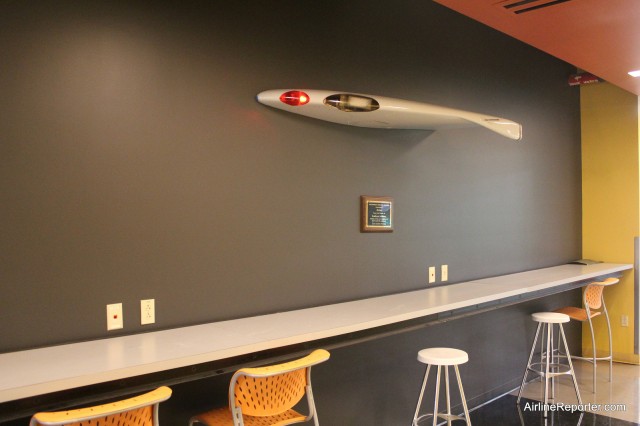
In the break area is this wing tip from Southwest Airlines that reads, “Thanks to the new winglets we don’t need this anymore.” Have to Luv it!
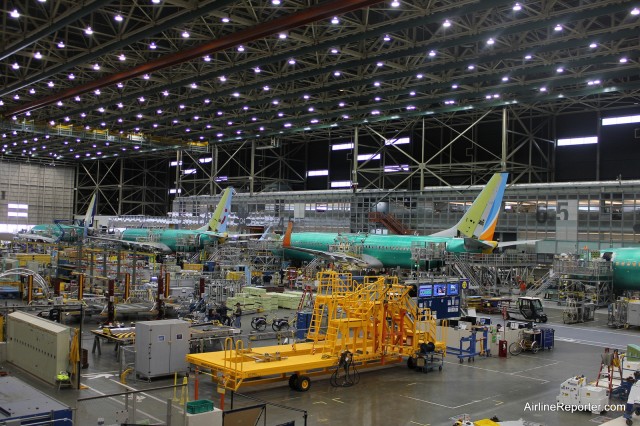
Can you tell what the two airlines are in these photos on the 737 Line 1? When taken, the area on the left was used for storage. Now it is being transitioned to handle the new 737 MAX.
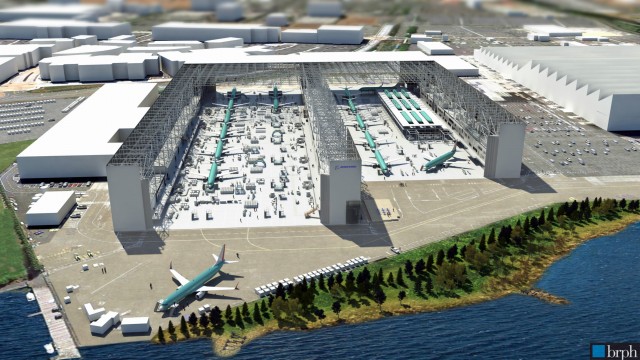
A cutaway rendering of what the 737 factory will look like after the MAX starts being built. Image by Boeing via Airchive.com.
Things have already stated changing in the factory since my visit. Boeing has started the construction to handle the new 737 MAX line, as shown in the composite image above.
I think that often the 737, seen as a common work horse by many, can be forgotten about. Even though they are pumped out of the factory with such vigor, each and every individual aircraft is still a marvel of engineering and innovation. The outside of the 737 might look similar to the first one that rolled off the line back in December 1966, but almost everything has changed in the aircraft. Heck, even the first NG that rolled off the line have quite a few changes compared to the NGs rolling out today.
It will be interesting to see how the history of this facility will continue to grow and change with the new MAX. Of course we will be excited to check out the changes once the line gets up and running.
MORE BOEING 737 GOODIES TO CHECK OUT
- Photos: Taking a close look at the Boeing 737 Factory in Renton via Flickr
- Story: Inside Boeing’s 737 Renton Factory As They ’œTake It To The MAX’
- Story: Inside Boeing’s 737 Renton Factory and the Successful Next Gen
- Story: A Historical Look at Boeing’s 737 Factory in Renton
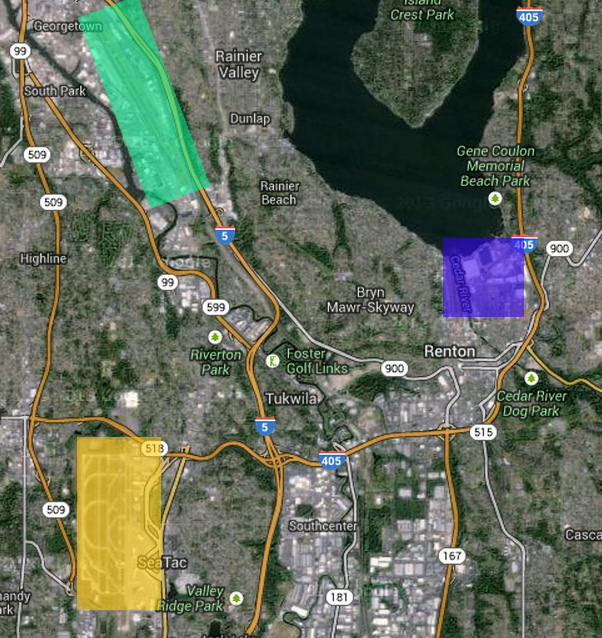
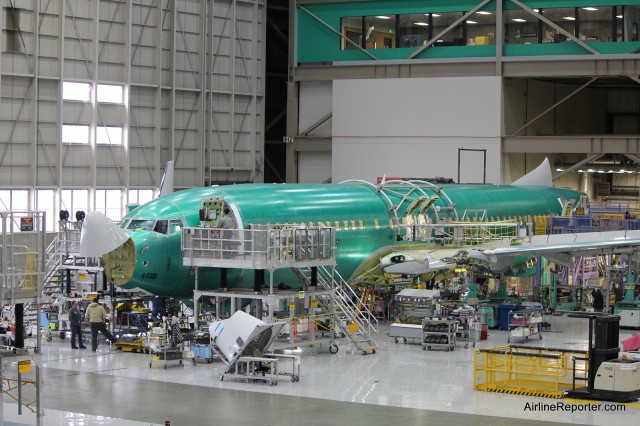
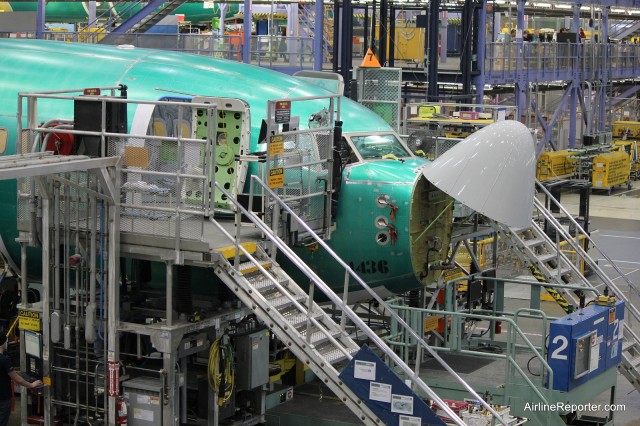
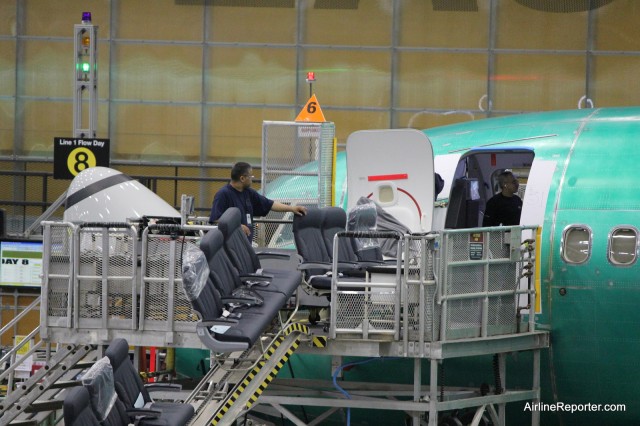
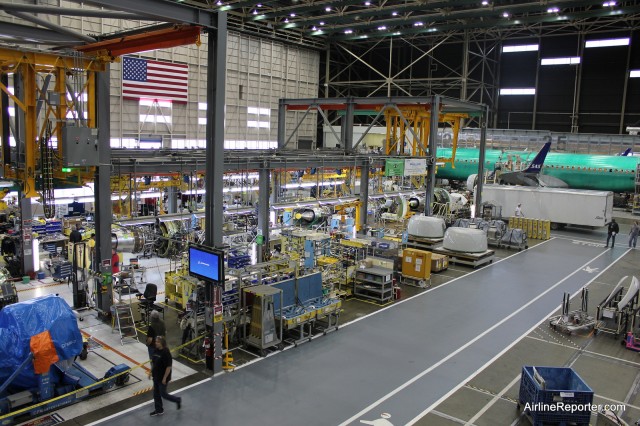
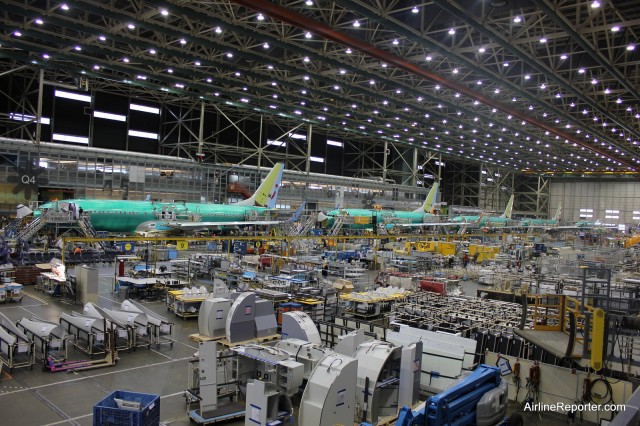
Excellent piece, it’s great to see the end of the line all the way over on the other side of the country. That wingtip in the break room? Epic!
In one word EXCELLENT- tour of the facility with important info on the program
Really appreciate this – thanks – and great photos. I fly mostly shorthaul in Europe and marvelled at the changes in the 737 in service over the 30 years of my life. The wings look completely different – and the planes generally bigger, and the cockpits have benefited from huge advances.
I wouldn’t mind havin one of dem’ der’ Jetliners, wonder if they have a Low Down Payment plan and low monthly payment plan ? Ya know, Your Job is your Credit :):)
I’d wanna an AM/FM Hi-Fi stereo with an 8-Track in my Jetliner tho, like the good ol’ days !
Good story, D…BTW, those trailers used to move the fuselages from the unloading bay to the line are known as dragsters. When I was doing the tour for my story in Trains Magazine, it took me a sec to see the resemblance, but if you look closely, those things indeed resemble a Top Fuel dragster, sans wing and engine.
Mike H.